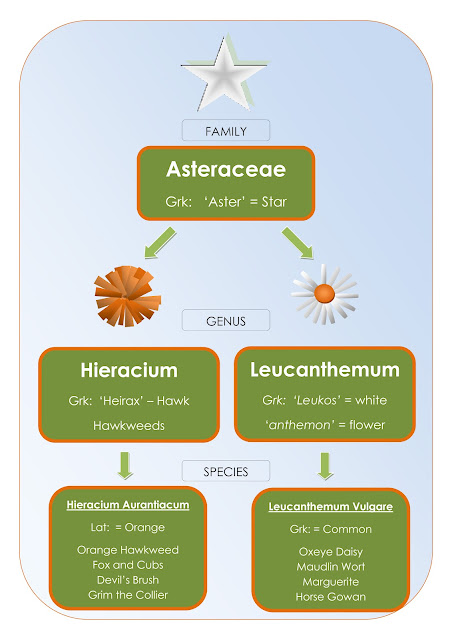Daisies make a return to Garden 65 - this time in the guise of their taller cousins, oxeye daisies.
A beautiful swathe of daisies has opened up at the same time as the fox and cubs. They occupy only a small space, about a metre square, but if you take a step in and squint a bit you can pretend you're in a summer meadow. And if you wear a floaty dress and sandals you might even get the full 'summer of love' effect, but as you see I didn’t go that far.
'Oxeye' seems a strange epithet for a white flower. Let me explain the reason for the association ...
- daisies were used in ancient times to help with wound healing.
Apparently the Romans carried mashed up daisies with them on their marches
- Hera, the goddess of war, was called ‘ox-eyed’
- War – wounds – daisies – goddess of war – oxeye ta da!
But it seems whoever the scholarly person was that first associated the flower with Hera’s nickname may have got his Greek translation wrong. The literal translation of the Greek word βοωπις is ‘cow-faced’, which was not necessarily a criticism of her looks, but could refer to her earlier more primitive guise as a horned cow goddess (think Catal Huyuk). But I digress. Perhaps we should ask Mary Beard to sort this one out.
The orange hawkweed, for that is what ‘fox and cubs’ is more properly called, has a lot of strange names associated with it. Surprisingly, given its scrappy character, it is not a native of Britain but was introduced in the 17th century as a medicinal herb to be used for eye problems. So any names attached to it must have only developed over the last 400 odd years.
The fox and cubs epithet apparently refers to the appearance of the flower clusters. If you look closely you can see one main flower on a stem with many unopened buds crowded behind it. The image implied is rather sweetly of a red mother fox hiding her darker little cubs underneath her. Awww.
Another of its names is ‘Grim the Collier’. This explanation is a little more muddled:
- The plant has black hairs = looks like it is covered in coal dust
- Grim the Collier was a well-known folk figure of the 17th century
- A play was written in 1662 called ‘Grim the Collier of Croydon’ in which the devil comes up to earth to find out how naughty women are (and then discovers they are naughty but also clever, so he goes back down again)
I’m not sure the relevance of the last point, but there seems a general reference to the dark colouring of the stems and unopened flower buds and the fiery foxy orange of the flower.
Those ancients were an imaginative bunch weren’t they? Suppose us moderns would be too if we didn’t have tv and twitter.
In the picture below I’ve combined my fleeting interest in taxonomy with the new online fashion of ‘infographics’ (diagrams to you and me) to produce some no doubt fleetingly interesting information on these two flowers.
They both belong to the family Asteraceae, which used to be called the Chrysanthemum family, and this is because, as I understand it, the shape of their flowers is star-like. And, full circle, we are back to the Greeks.
(made in Word, saved as pdf, opened in PhotoShop, saved as jpg)

